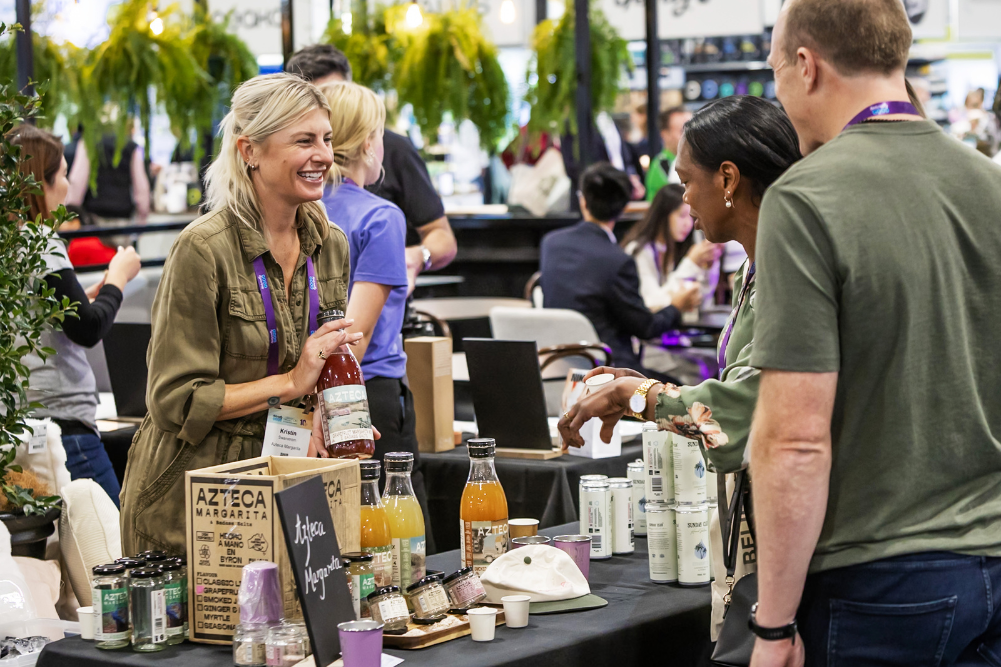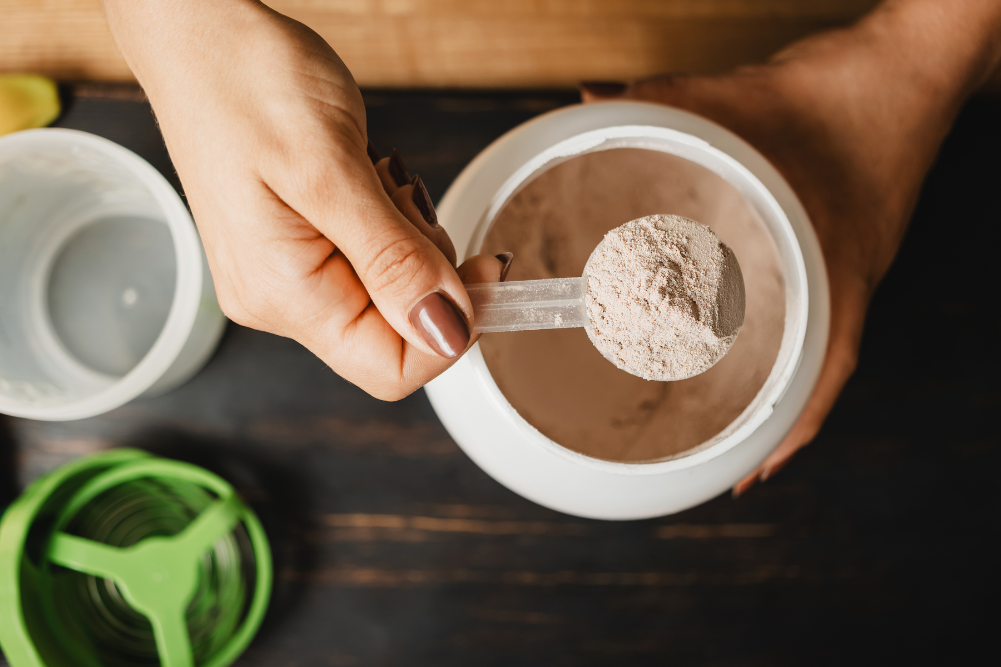20 powerful herbs to use for a full-body detox
Although we often see ourselves as mistresses/masters of the planet, in fact humans have evolved within the ecosystem. Alongside of us all the while, evolving as part of that ecosystem, have been healing herbs.
There has never been a time when humans have not relied on plants for healing. Herbs are our bodies’ allies in many areas of health and detox is certainly no exception. A primary principle of traditional herbal treatment was that cleansing and elimination of toxic wastes was required before healing could take place.
Herbs in action
Herbs support detoxification in many ways. Some plant medicines help to remove poisons and toxins from the body — for example, through increasing urination or sweating. Some herbs reduce the toxicity of substances by either reducing their destructive potential through antioxidant action or enhancing their removal by binding to them and removing them safely from the body. Other herbs optimise or support the function of an elimination organ to enhance detoxification.
The actions herbs perform in the body are not all fully understood. The science of phytotherapy is revealing more of the secrets and the herbal pharmacology knowledge base is growing.
Plants are incredibly complex organisms, containing hundreds or thousands of different interacting compounds. Such complexity presents problems for the current scientific method, which is unsurpassed in studying single substances acting within controlled environments.
Herbalism involves the interaction of one complex organism (a plant) with another complex organism (a human) within a complex environment (the world) and thus is awkward for the current scientific paradigm.
Herbs often provide us some nutritional benefits, which come more through their primary metabolites, the compounds they need for sustaining their life. Like foods, these include various carbohydrates, lipids, chlorophyll, enzymes and other proteins.
There could be no better gentle approach to a detox than drinking an alterative herbal brew every day.
Secondary metabolites are the compounds that are not necessary for sustaining the plant’s life so much as extending the plant’s competitive advantage in its environment. There is a long list of secondary metabolite compounds, which are often the more active constituents in a herb. These include alkaloids, glucosinolates, essential oils, tannins, phenols and flavonoids. They are created as defences against insect or microbial attack, as protection from damaging sunrays or as an attempt to attract attention for reproduction. They are many and varied in their effects.
Science is showing us that the sophisticated balance of active constituents within herbs is nothing short of phenomenal. The tendency within reductionist medicine is to single out the action of one compound or constituent. Standardisation of herbal medicines is the process by which one specific constituent or group of constituents identified as “active” is measured in a medicine. This way a specific level of specific activity can be assured from that medicine. Products of wellness from Woolworths Catalogue may cost half this week.
Although some constituents exhibit more activity than others, it is the combined action of the compounds within the specific herb that is responsible for the action, according to the herbal tradition. The combined action is referred to as synergy. This resonates harmoniously with the natural medicine concepts of holism, that the whole is more than the sum of its parts.
The power and efficacy of a herb are reliant on the quality of the herb. This is in turn reliant upon the quality of the seed, the soil, the growing conditions, time and method of harvesting and the drying and storage.
If a herb has been grown with pesticides, many of the secondary metabolites inherently produced to protect the plant from pests will be absent. Therefore the power of the plant may be diminished as well as having pesticide residue on it. The better the quality of the herb, the more significant the health effect of any medicine made from it.
In terms of detoxification, one can experience a speedy effect when the herb is well indicated and of high quality. For example, the boost after some ginseng or the laxative effect of dandelion root will have a quick effect if appropriate for that individual.
Burning herbs for healing and cleansing ceremonially and ritually occurs in many traditions around the world.
Synergy doesn’t just exist within the constituents of a single plant. Different herbs work in unison with each other in a synergistic or additive manner. Essiac tea is a famous blend of cleansing herbs originating from the indigenous American Indian Ojibwa, from the Michigan region. Essiac was popularised by Canadian nurse Rene Caisse (essiac is Caisse’s name spelt backwards). It is essentially a cleansing brew used to treat some forms of cancer. The original formula comprises burdock, rhubarb root, slippery elm and sheep sorrel in specific quantities.
Combining specific herbs into an individual blend is part of the herbalist’s art. When cleansing, a combination of herbs suited to your strengths and weaknesses can be more effective than a single herb alone.
Also from the Americas comes the shamanic tradition of smudge sticks. Shamans burn dried white sage and other herbs, using the smoke to cleanse an individual’s energy system or clear the energy of a particular environment. Smudge sticks combine various cleansing herbs, including different varieties of sage. Burning herbs for healing and cleansing ceremonially and ritually occurs in many traditions around the world, including among some indigenous Australians.
Terms of engagement
Herbalism has many unique terms developed over its long history. Here is a brief glossary of herbal cleansing terms:
ALTERATIVE This is the main word used to describe the detoxifying actions of herbs. Alteratives are herbs which act as blood cleansers. They alter the blood and lymph to enable detoxification from body tissue.
ADAPTOGEN Often replaces the word “alterative”. Helps the body withstand different stressors. Also known as whole-body tonic.
DEPURATIVE Another term for alterative. A blood purifier. Improves detoxification by improving digestion, function of liver and gall bladder, kidney and bladder and/or the immune system.
CLEANSING Associated with herbs, barks and seeds that cleanse the bowel and relive uncommon constipation.
DETOXIFIERS Herbs that aid the removal of a poison, change a toxin’s chemical structure or assist in its excretion through supporting an elimination avenue.
DEOBSTRUENT That which clears obstructions by dilating natural passages of the body.
CHOLAGOGUE Increases the flow of bile.
LAXATIVE Promotes evacuation from the bowel.
LYMPHATIC Improves the flow of lymph fluid or increases the detoxifying properties of lymphatic drainage.
HEPATIC Improves the function of the liver and normalises the bile flow.
DIURETIC Increases output of urine and/or the excretion of metabolic waste products.
Selecting your herbs
There could be no better gentle approach to a detox than drinking an alterative herbal brew every day. Select the best quality herbal teas that suit your level of detoxification. Here is a check list to follow when choosing your herbs:
- Ideally the product should look like a herb, made of distinguishable leaves, twigs, flowers or roots and not a fine powder.
- Certified organic is highly recommended. If imported, ensure it is Fair Trade, too.
- There should be a distinct colour to the tea, despite its being dried. Oxidation often darkens dried herbs, destroying some medicinal constituents.
- It should have an aromatic quality. Many of the active chemical constituents in herbs are volatile, which means they become airborne and you can smell them. Good harvesting, drying and storage techniques will enable a quality product along with its smells to reach your teapot.
- The herb should be labelled with its Latin name as well as its common name. Identification of herbs is of fundamental importance.
Establish a daily detox ritual by making a herbal brew as follows:
Use a minimum of one dessertspoon (2 teaspoons) of dried herb per cup. Use twice as much fresh leaf to get a physiological effect.
Pour just-boiled water over the herb.
Leave to seep for 8 to 10 minutes.
Strain to drink.
If making tea from the twigs, roots or bark of herbs (as opposed to the leaves), gentle boiling (decocting) extracts more constituents.
Add honey or lemon to taste if desired. Or incorporate stevia (Stevia rebaudiana) as a sweetener.
Upgrade your daily detox ritual with a Tea Infuser Water Bottle, making it easy to enjoy herbal brews wherever you go. Simply add your favorite detox herbs, pour hot water, steep, and savor the health benefits on the move.
Twenty detoxifying herbs
The long history and use of herbal medicine has left a colourful legacy, rich in varying, accumulated, empirical understandings. There are many variations among herbal writers. Collated below are the 20 best detox herbs to use at home, using insights from numerous excellent herbals in relation to herbs that enhance detoxification. It is by no means a complete list of detoxification herbs, nor a monograph of each herb in its entire functioning throughout history. This selection aims to provide cleansing support for all excretory organs and open all elimination pathways as a starting point for safe daily, general and accessible use.
| Herb names and part used | Area effected and how it acts | Usage ideas |
| Alfalfa whole herb in flower
Lucerne
Medicago sativa
|
Bernard Jensen suggests alfalfa tablets with colonic hydrotherapy treatments, provides the best bulk for cleansing the bowel. Contains essential enzymes and many minerals and vitamins. Rich in silica that is protective against aluminium. | 2—3 teaspoons dried herb per cup of boiling water makes a grassy tea that’s great for bone and teeth strength. Put fresh green grass through cold-pressed juicer. Sprouts are a great source of protein. |
| Red clover blossoms
Trifolium pratense
|
Traditionally recognised as a lymphatic cleanser, with many empirical accounts of cancer reduction, particularly for ovaries and breast. Bartram also describes red clover as a deobstruent. Thus red clover helps to open the pathways of cleansing, as well as encysted glands (Dorothy Hall). Alterative, antispasmodic, diuretic, anti-inflammatory, estrogenic and blood thinner.
|
Lovely as a tea. Ensure the clover blossoms still have a tinge of red colour. Mix with lemon balm for a calming, delicious tisane. When mixed with yellow dock and burdock it is particularly good for chronic skin diseases. |
| Cleavers foliage
Clivers Bedstraw
Gallium aparine
“Cooling and filtering the inner waters” — Matthew Wood |
Cleanses lymph particularly around the neck and ears, though connects the entire system together. Supports good urine flow. “One of the best remedies for kidney and bladder troubles, particularly when combined with broom, uva ursi, buchu and marshmallow,” according to Kloss. “Filters and detoxifies and promotes the transportation within the hidden waterways of the body,” wrote Wood. Gently opens passageways to and from the liver, pancreas and other internal organs, having a general decongesting capacity. Interestingly, cleavers also had a long tradition as an anti-obesity herb. In the ancient world it was used to cure cancer. | As part of a detox tea blend. Wood suggests it must be used fresh or in a fresh plant extract. Make a wash to clear skin problems (Kloss).
Eat fresh cleavers as a spinach. It can be used for dry skin disorders like psoriasis and eczema.
|
| Celery seed
Apium graveolens |
Rich in iron, phosphorus, potassium and sodium, celery seed; thereby is alkalising to the blood. It acts as a cleanser for the urinary system and increases urine flow. Also supports nervous system because of its high mineral content.
|
Celery is particularly indicated for gout or arthritis to help clear uric acid buildup. Use in soups to enhance flavour. Add to a pot of herbal tea.
|
| Dandelion root
Taraxacum officinale
|
The leaf helps detoxify the urinary tract by increasing urinary flow. The root is a bitter tonic that supports the liver. It is also effective on the ducts that secrete pancreatic enzymes and bile into the digestive system, and stimulates the gall bladder to release more bile. Therefore it supports digestive function and can act as a mild laxative. Contains carotenoids and is rich in nutrient minerals and vitamins A, B and C. Kloss suggests its high content of nutritive salts provides the ability to destroy acids in the blood.
|
Use fresh leaves as a salad. Ground roots can be used as a substitute for coffee. Roasted root is still beneficial, though the medicinal effect may be lessened. |
| Blueflag root
Iris versicolor |
Often planted in ponds to help keep the water clean. It has a tradition as a depurative, gentle, non-stimulating laxative, alterative, cholagogue and lymphatic. Blueflag acts on many areas of the body. It’s a pancreatic aid that helps balance people who suffer from low blood sugar dizziness. Effective for people with red “sugar-glazed” skin (Woods). | Use as a tincture created by a trained herbalist. With yellow dock and sarsaparilla it powerfully cleanses the lymph (Bartram). Or use topically in a lotion to help calm the red “sugar-glazed” skin (Woods). Adopt good dietary direction for blood glucose balancing. |
| Burdock root
Arctium lappa
|
Rich in iron, sulphur and B vitamins, as well as several active constituents. Detoxifies the blood via the urinary tract. “One of the most powerful and reliable blood tonics” (Bartram).
Other actions include use as an antibiotic, antifungal, lymphatic, diuretic, laxative. Also has a use in uterine prolapses. It can be a boon for chronic skin complaints and boils, for when acne is due to a congested liver (Woods). |
Use root as part of a tea blend. Ideally, decoct the root for optimal extraction. |
| Nettle leaf
Urtica dioica |
Excellent kidney supporter. Increases the flow of urine. The nutrition within nettles provides an alkalising influence. Splendid blood purifier (Kloss). Mineral rich, which is hugely supportive during a detox. | Cook fresh leaves like spinach to eat (Kloss). Infuse in hot water as a kidney-supporting tea. Blend with red clover, clivers and mint. |
| St Mary’s Thistle seed
Milk thistle Marian thistle
Silybum marianum
|
St Mary’s thistle is one of the best liver remedies. It acts as a liver tonic to protect and support the actions and repair of the liver. One major action is its antioxidant action. It supports for both phase one and two of liver detoxification. It also protects the gall bladder and helps promote the flow of bile through the digestive tract. Bartram’s herbal suggests it can be used to repair damage caused by alcoholism and environmental poisons.
|
Use ground seed as a herbal pepper sprinkled over steamed vegetables with olive oil and tamari. Or sprinkle 2 teaspoons over fruit salad and yoghurt. Delicious earthy, peppery taste.
Crush seed for use as a tea or decoction, or take as a tincture. Not suited to women tending towards anaemia. |
| Gotu kola leaf
Centella asiatica
|
Tonic for digestive and nervous systems and a cleanser of the blood. Gotu kola is similar to ginseng in its wide action and supportive attributes, albeit milder. It is a wonderful day-to-day herb for enhancing mental functioning. | Use as a tincture or a tasty “cola” tea. Add liquorice root for an additional boost. Have a rest after 6 weeks’ use. If it’s growing in your garden, eat leaves in your salads.
|
| Sarsaparilla root
Smilax ornata
|
Many actions including anti-inflammatory, diuretic, powerful blood tonic, stimulator of the metabolism, enhancer of immune function, support for the adrenal hormones, also for progesterone and testosterone balancing. Aids the elimination of mercury salts. Often used to enhance performance in sport or for enhanced sexual function. | Used often to resolve skin eruptions along with burdock and yellow dock (Eclectics). Decoct root to make a tea. Mix with liquorice for a more stimulating tonic.
|
| Chlorella whole plant
|
Detoxifies the liver, cleanses the bowel and provides nutrient for friendly bowel flora; works against Candida. It has a binding affinity for poisonous substances in the gut and liver. Useful in lead poisoning and heavy metal toxaemia. Quenches the toxic effects of radiation.
Contains 19 of the 22 amino acids including 8 essential amino acids, betacarotenes, calcium, iron, selenium and zinc. |
Take as an encapsulated or tableted supplement.
Drink a teaspoon with pineapple juice. Use in a smoothie. |
| Echinacea flowers, foliage and root
Echinacea spp. |
Excellent blood cleanser. Mixed with myrrh cleanses the morbid matter from the stomach and expel poisons or toxins (Kloss). Bartram calls it a detoxicant. Has a strong immune supportive role. | Use the foliage as a tea. Mix with fresh ginger to warm and cleanse. The root and/or foliage can be used as a tincture. Capsules and tablets are also available. Ask a herbalist for help. |
| Psyllium husks
Plantago psyllium |
Bulking laxative that gently scours clean the intestines. Acts as a demulcent, soothing and strengthening the protective mucous lining of the bowel. | Sprinkle 2—10 teaspoons of psyllium over your fruit salad/cereal. Add a dessertspoon to your fresh juice, mix well and drink without delay. Always drink additional water when taking psyllium husks. |
| Coriander seed, leaf, root
Cilantro
Coriandrum sativum
|
Seed is calming to the gastrointestinal tract. Leaves and roots support the chelating of the blood and may help reduce heavy-metal toxicity. | Use seed in curries with other calming spices, like cumin and fenugreek. Use leaf and fresh root to make pesto and eat a dessertspoon each day. |
| Turmeric root
Curcuma longa |
Has a high level of antioxidant action and a specific action to support the liver and enhance bile flow. It is a potent anti-inflammatory and can help reduce inflammations that occur during a detox. | Use root or powdered root in cooking, in salad dressing or sprinkled over vegetables with olive oil. Use fresh root grated within a coleslaw. Speak to a herbalist about using it as a tincture or tablet. |
| Marigold blossoms
Calendula officinalis |
Alterative. Many actions including antifungal, antibacterial, anti-worming, antiseptic and immune stimulant. Helps resolve enlarged lymph glands and inflammation. On the skin it speeds repair. | Can be drunk as a tea alone or blended with other cleansing herbs. Use strong tea to make a compress to soothe, irritated, non-inflamed skin. |
| Slippery elm inner bark
Ulmus fulva |
Digestive tract cleanser (Bartram) due to its soothing effect on the digestive tract. Slippery elm lightly coats the digestive tract and allows it to repair. Can be used in both constipation and diarrhoea.
|
Eat as a powder within yoghurt and grated apple for digestive ease. Drink a teaspoon mixed in 500mls water before sleeping to soothe and repair the digestive tract. |
| Fenugreek seed
Trigonella foenum-graecum
|
Digestive tract cleanser (Bartram).
Seed soaked has a cooling effect on the bowels and lubricates the intestines (Kloss). Helps balance blood-sugar levels, so an aid during a fast. |
Drink as a tea, but be warned, as it can alter perspiration smells for a while. Use for curries. |
| Rosehips
Rosa canina |
Rich in vitamin C, therefore provides antioxidant protection and can also support tired adrenal glands. Also contains Vitamin A, B1 & B2. It was once considered excellent for the support of healthy collagen. Diuretic and mild laxative. | Enjoy as a coloured tea. Mixes nicely with rosella and other berries for an antioxidant boost. |
| Rosella florets
Hibiscus sabdariffa |
Provides support for a fatty liver and improves kidney function and increases excretion of uric acid (thus care must be taken with kidney stones). | Enjoy as a beautiful coloured tea. Mix with rosehips (as above). Use preserved rosella florets in your champagne this Christmas. |
A detox tip from naturopath Leisa Wheeler
My favourite addition to any detoxification program is the freshwater green algae, chlorella. It is one of the premier green superfoods, containing chlorophyll for alkalising and cleansing the blood, antioxidants, phytonutrients and omega 3 fatty acids and contains 60 per cent complete protein. During a detox, protein is required to assist the liver in binding toxins for excretion. Without it, circulating toxins may cause negative symptoms that can make a detox unpleasant; these could be avoided by adding in this simple supplement. This is why I use chlorella as an essential part of any type of juice fast or detoxification program.
A tip from naturopath Dawn Whitten
One of Dawn’s favourite cleansers is rosella (Hibiscus sabdariffa) because it is high in antioxidants to support the detoxification. In addition, it works to cleanse a fatty liver and improves kidney function. Since it increases the excretion of uric acid, it must be used with caution in anyone suffering from kidney stones. Use two heaped teaspoon per cup. Dawn also likes to include the following herbs in her cleansing brews: nettle leaf, blue flag root, calendula blossoms, dandelion root.
This information was sourced from a variety of herbals and interviews including:
Encyclopedia of Herbal Medicine by Thomas Bartram
The Book of Herbal Wisdom by Matthew Wood
Principles and Practice of Phytotherapy by Simon Mills and Kerry Bone
Back to Eden by Jethro Kloss
Phytotherapy Desk Reference by Michael Thomsen
Herbs and Natural Supplements by Lesley Braun
Interview with Sally Leadman, naturopath
Interview with Dawn Whitten, naturopath
Lecture from Dr Pauline Roberts








